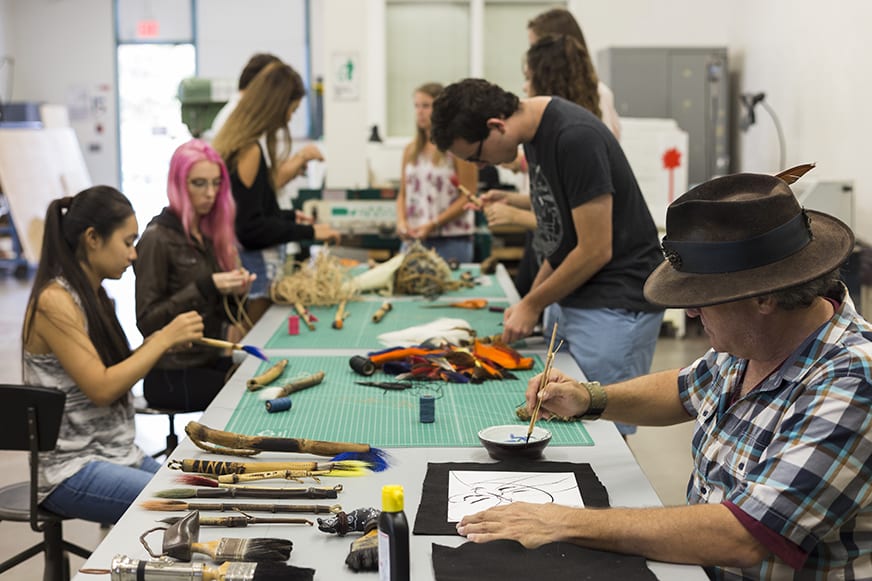
Art, nature, science, and mindfulness become wonderfully united in the Studio Arts course Art and Ecology. With an emphasis on an appreciation for nature, students are challenged to disregard their notions of what makes art in this interdisciplinary course.
Art and Ecology, which is open to both majors and non-majors, combines a scientific study of plants and other forms of life with studio time – always respecting the principles of design. A typical day in Art and Ecology might include a lecture on the root systems of trees along with an art project made with tree branches and other non-traditional materials. Thus, this connection to nature is put into practices through non-traditional classroom experiences such as outdoor nature walks and bird watching. The course is taught by STAR adjunct faculty member Glenn Grishkoff.
Grishkoff provides insight into the use of materials from nature, “Students see the totality of art making – that art is not limited to canvases and clay. All the choices the students have on this project reveal the beauty of the materials they start with to ultimately create a compelling composition and piece; something that’s new for the first time.”
The interdisciplinary nature of the class comes into play with the students’ handmade brush project. Students combine materials like salvaged drift wood pieces, leather, and animal hair to create their takes on paint brushes. Although each student begins with essentially the same materials, freedom of design and lack of standardized steps allow each student to creatively approach the project. Their personalities and artistic styles shine through as each student’s finished product is a unique rendering of what they believe a paintbrush could be. A final personal touch some students opt for is the engraving of iconography from class readings, calling back to the brush’s intrinsic connection to nature.
Although the projects are pieces of art in and of themselves, they are also functional tools. Differing from standard store-bought brushes, the brushes students create render interesting, uneven lines. Grishkoff observes that the unconventional shape of these brushes encourages variety and experimentation when it comes to the students’ compositions. In this way, from start to finish, the paintbrush project exposes students to new perspectives on their art.
Ultimately, Grishkoff wants students to walk away from the class with a greater appreciation for nature, and a deeper relationship with art. “I want my students to interact with their world and environments through art, no matter where they are,” he said. “Oftentimes we separate art and science and nature, but they’re all connected. Even if my students don’t go on to be artists, I want them to see art in a different light – as something deeply related to the environment and their daily lives.”



